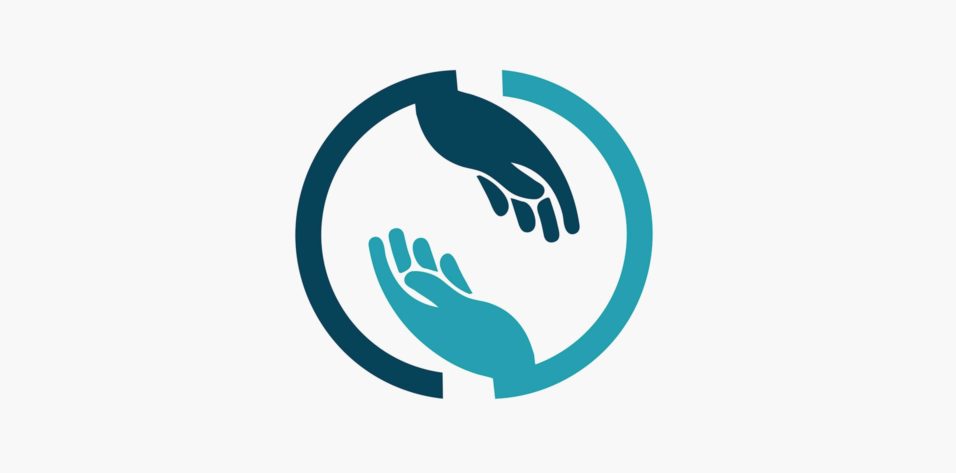According to the World Health Organization (WHO) first World Report on Vision, at least 2.2 billion people worldwide are living with vision impairment, and 1 billion of them have a vision impairment that could have been prevented.1 Estimates suggest that 80% of vision impairment is reversible or curable;2 however, the overwhelming majority of the world’s visually impaired live in low-income settings, making access to care a significant challenge. Underutilization of eye health services has been linked to a lack of access to care due to gender inequality, low socioeconomic status, low income, low employment, illiteracy, and cost barriers.3
Avoidable blindness is projected to triple by the year 2050.4 Organizations working toward the prevention of global blindness by raising funds and awareness about causes, cures, and the effect blindness has on quality of life around the world are invaluable in the fight against global blindness. The hope is that these organizations can facilitate an end to global blindness. This article provides brief summaries of several nongovernmental organizations engaged in this work and what each one is doing to promote eye health and prevent blindness.
ORGANIZATIONS AIDING IN THE FIGHT AGAINST GLOBAL BLINDNESS
Eversight
Eversight was known as the Illinois Eye Bank when it was established in 1947. Today, the services offered by the organization reach far beyond those of traditional eye banking. Eversight seeks to advance treatments for all blinding eye diseases by recovering, evaluating, and providing human eye tissue for transplantation; supporting research into the causes and potential treatments for blinding eye diseases; promoting tissue donation awareness via public and professional education; and providing humanitarian aid to people around the world who are in need of sight-restoring therapies. The organization partners with local governments and communities in underserved areas, including the Middle East, Pakistan (Figure 1), and South Korea, to help them establish sustainable networks for eye banking with culturally appropriate donation models and state of the art clinical capabilities.
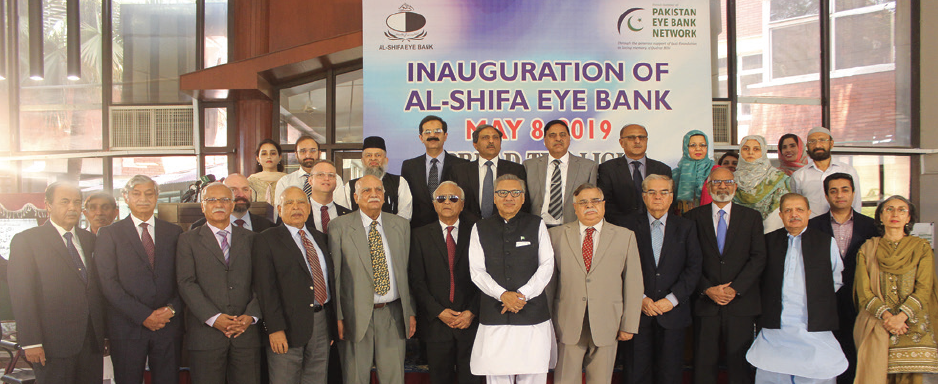
Figure 1. Al-Shifa Trust Eye Hospital opened Pakistan’s first eye bank in partnership with Eversight. Arif Alvi, President of Pakistan (center), attended the May 2019 grand opening in Islamabad.
Courtesy of Eversight
To learn more, visit www.eversightvision.org.
Foundation Fighting Blindness
Established in 1971, the Foundation Fighting Blindness is now the world’s leading private funder of retinal disease research. Its goal is to fund research that will discover methods of prevention, treatments, and vision restoration strategies for degenerative retinal diseases, with a focus on macular degeneration. As a result of research funded by the foundation’s Clinical Research Institute, more than 270 genes linked to retinal disease have been identified and 36 clinical trials have been launched. Every year, the foundation funds more than 100 research grants for projects conducted by investigators at institutions, eye hospitals, and universities in the United States, Australia, England, France, Germany, the Netherlands, Italy, Israel, and Mexico.
To learn more, visit fightingblindness.org.
Helen Keller International
Helen Keller International aims to save the sight and improve the lives of the world’s most vulnerable citizens by addressing the causes and consequences of blindness, poor health, and malnutrition. The organization operates more than 100 programs in 20 African and Asian countries and the United States. In 2018, the Helen Keller Foundation provided treatment to prevent diseases of poverty to millions of people, trained surgeons who performed thousands of cataract surgeries in the developing world, screened the vision of more than 92,000 students in the United States who were living in the country’s poorest neighborhoods, and provided free eyeglasses to more than 20,000 of those students.
To learn more, visit hki.org.
Himalayan Cataract Project
Since 1994, the Himalayan Cataract Project (HCP, Figures 2–4) has directly supported the training of 552 ophthalmic personnel from 20 countries. HCP is driven to build sustainable eye health care systems that can function effectively and independently over the long term. Its top priority is to reach the greatest number of unserved blind people with the highest quality care and at the lowest cost possible. To accomplish this task, HCP provides education and training to individuals at all levels of ophthalmologic care by working with a variety of partner institutions and affiliated ophthalmologists in the United States, South Asia, and Europe. HCP also provides consumables and equipment for surgery to expand existing facilities and to enable the facilities to meet unmet needs as it constructs new facilities in partnership with local associates.
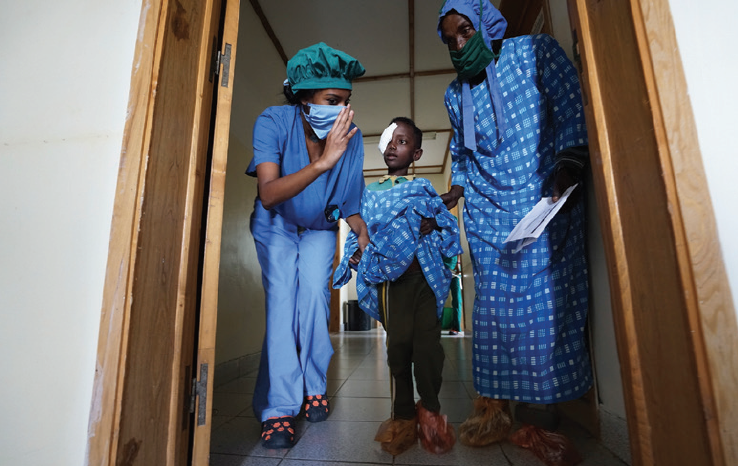
Figure 2. A young Ethiopian boy heads to the OR for his cataract surgery.
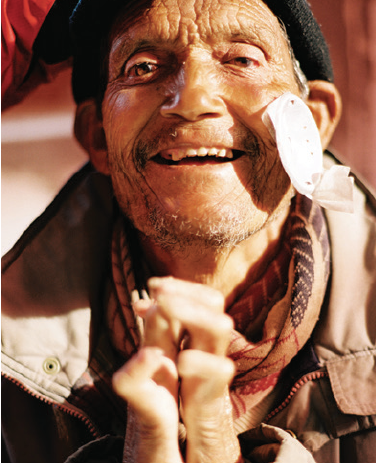
Figure 3. A happy postoperative cataract patient.
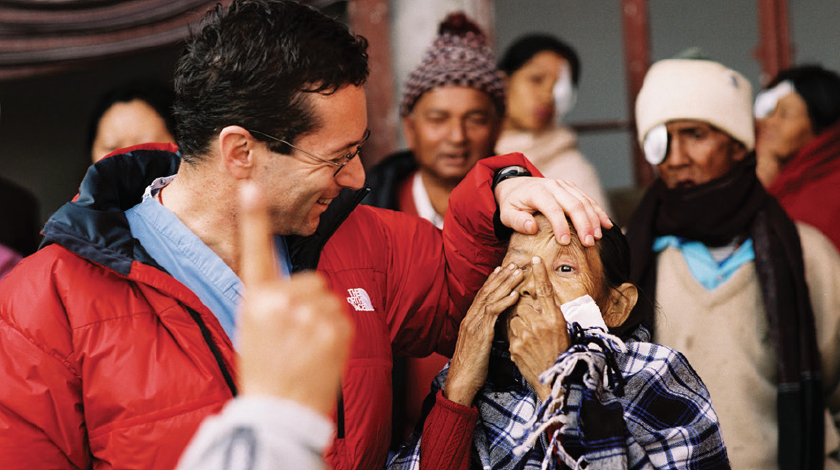
Figure 4. Geoffrey Tabin, MD, and a postoperative cataract patient in Kalimpong, India.
Figures 2 through 4 courtesy of Himalayan Cataract Project and Ace Kvale
To learn more, visit cureblindness.org.
The International Agency for the Prevention of Blindness
The International Agency for the Prevention of Blindness (IABP) was established in 1975 to function as an umbrella organization coordinating and leading international efforts in the prevention of blindness. The IAPB is responsible for the formation of the WHO’s program for the prevention of blindness. The flagship of this program is the global initiative Vision 2020: The Right to Sight. The IABP is on a mission to achieve universal access to eye health and plans to accomplish this by adding value to and maximizing the impact of the individual and collective work of its member organizations and by promoting knowledge and awareness of comprehensive eye health system development. For more information about global initiatives supported by the IABP, see Global Initiatives to End Global Blindness.
To learn more, visit iapb.org.
International Eye Foundation
The mission of the International Eye Foundation is to eliminate preventable and treatable blindness worldwide by increasing the affordability of and access to good quality, comprehensive, sustainable eye care services around the world. The foundation ensures the delivery of eye care to underserved communities in the developing world by transforming eye hospitals into social enterprises that provide care at all economic levels.
To learn more, visit iefusa.org.
L’Occitane Foundation
The L’Occitane Foundation set the objective of providing eye care to 10 million people by 2020 through its Union for Vision 10by20 Program. This program integrates the foundation’s international initiatives to work to combat avoidable blindness through partnerships with nongovernmental organizations that work to support eye screening, disease and low vision treatment, and eye surgery, in addition to funding equipment purchases and medical staff training. In 2016, the foundation partnered with UNICEF to guarantee at least €1 million per year for the prevention of childhood blindness in Bolivia, Myanmar, and Papua New Guinea through the development of vitamin A supplementation programs. The L’Occitane Foundation also supports the work of Light for the World and Sightsavers by training ophthalmologists and medical staff and improving access to high-quality eye care services in rural areas.
To learn more, visit fondation.loccitane.com.
Orbis International
David Paton, MD, conceived of Orbis International after spending significant time abroad and recognizing the lack of eye care and ophthalmic teaching available in developing countries where blindness was—and still is—widespread. Orbis International operates the Flying Eye Hospital, a cargo plane–turned traveling teaching eye hospital. In 2018, the Flying Eye Hospital and its staff provided more than 3 million eye screenings and examinations for children, prescribed more than 8 million doses of antibiotics for trachoma, and performed 78,000 eye surgeries and laser treatments. Orbis International also equips local hospitals and works at the community level to train and educate residents about eye health in efforts to ensure that even the most remote areas have access to treatment. The organization also advocates for eye health to become a priority of governments and policymakers and has created Cybersight, an online mentoring telemedicine program.
To learn more, visit orbis.org.
Organisation Pour la Prévention de la Cécité
The Organisation pour la prévention de la cécité (OPC) develops programs in collaboration with partner countries that are then responsible for the implementation of the programs, using a four-phase development and implementation strategy called #FORESIGHT. The OPC also runs the Neglected Tropical Diseases program, which supports partner countries to map disease burden, gain access to donated medicines, train community drug distributors, distribute drugs, and monitor and evaluate program performance and impact, and the Comprehensive Eye Care Program, which combines comprehensive eye examinations and services within the partner country’s existing health care system. For more information about the OPC’s #FORESIGHT initiative see Global Initiatives to End Global Blindness.
Global Initiatives to End Global Blindness
A nonexhaustive listing of programs.
- Seeing Is Believing
The flagship community investment program of Standard Chartered, an international banking service, which provides funding to address avoidable blindness and promote eye health.1
- World Sight Day
An annual day of awareness, held on the second Thursday of October, to raise awareness and focus global attention on blindness and vision impairment.2
- Our Children’s Vision
An organization working to ensure that effective, sustainable eye health initiatives for children and adolescents are part of appropriate health programs and are integrated into regional, national, and global education and health policy.3
- The Standard List
An online procurement and budgeting platform for eye health services in developing countries, providing a carefully evaluated range of technologies from trusted suppliers, enabling International Agency for the Prevention of Blindness (IAPB) members and partners to access them at specially negotiated prices.4
- IABP General Assembly
A forum held every 4 years for people involved in the fight against avoidable blindness and visual impairment to share information and exchange ideas. The next General Assembly will be held October 12 to 14, in Singapore.5
- The Vision Alliance
Joint initiative of the International Council for Education of People with Visual Impairment, the IAPB, and the World Blind Union to create greater synergy and collaboration among the organizations.6
- Rotary International Service Partnership
An initiative allowing IABP members to partner with Rotary clubs to provide access to eye care services.7
- DR Barometer Project
A study of almost 7,000 adults with diabetes that is investigating the global, regional, and country-specific issues surrounding diabetic retinopathy and diabetic macular edema.8
- #FORESIGHT
A school eye health program developed by L’Organisation pour la prévention de la cécité to deliver comprehensive eye care to schoolchildren and teachers in some of the world’s most neglected communities.9
The flagship community investment program of Standard Chartered, an international banking service, which provides funding to address avoidable blindness and promote eye health.1
An annual day of awareness, held on the second Thursday of October, to raise awareness and focus global attention on blindness and vision impairment.2
An organization working to ensure that effective, sustainable eye health initiatives for children and adolescents are part of appropriate health programs and are integrated into regional, national, and global education and health policy.3
An online procurement and budgeting platform for eye health services in developing countries, providing a carefully evaluated range of technologies from trusted suppliers, enabling International Agency for the Prevention of Blindness (IAPB) members and partners to access them at specially negotiated prices.4
A forum held every 4 years for people involved in the fight against avoidable blindness and visual impairment to share information and exchange ideas. The next General Assembly will be held October 12 to 14, in Singapore.5
Joint initiative of the International Council for Education of People with Visual Impairment, the IAPB, and the World Blind Union to create greater synergy and collaboration among the organizations.6
An initiative allowing IABP members to partner with Rotary clubs to provide access to eye care services.7
A study of almost 7,000 adults with diabetes that is investigating the global, regional, and country-specific issues surrounding diabetic retinopathy and diabetic macular edema.8
A school eye health program developed by L’Organisation pour la prévention de la cécité to deliver comprehensive eye care to schoolchildren and teachers in some of the world’s most neglected communities.9
1. Seeing Is Believing. International Agency for the Prevention of Blindness. https://www.iapb.org/seeing-believing/. Accessed November 21, 2019.
2. World Sight Day. International Agency for the Prevention of Blindness. https://www.iapb.org/advocacy/world-sight-day/. Accessed November 21, 2019.
3. Our Children’s Vision. International Agency for the Prevention of Blindness. https://www.iapb.org/global-initiatives/our-childrens-vision/. Accessed November 21, 2019.
4. IAPB Standard List. International Agency for the Prevention of Blindness. https://www.iapb.org/global-initiatives/iapb-standard-list/. Accessed November 21, 2019.
5. Global Assembly 2020. International Agency for the Prevention of Blindness. https://ga2020.iapb.org/. Accessed December 3, 2019.
6. Vision Alliance. International Agency for the Prevention of Blindness. https://www.iapb.org/vision-alliance/. Accessed November 21, 2019.
7. Rotary International Service Partnership. International Agency for the Prevention of Blindness. https://www.iapb.org/global-initiatives/rotary-international-service-partnership/. Accessed November 21, 2019.
8. DR Barometer. International Agency for the Prevention of Blindness. https://www.iapb.org/global-initiatives/dr-barometer/. Accessed November 21, 2019.
9. FORESIGHT: OPC for sustainable sight. L’Organisation pour la prévention de la cécité. https://theopc.org/foresight/. Accessed December 3, 2019.
To learn more, visit theopc.org.
Sightsavers
Aiming to prevent sight loss and avoidable blindness in the poorest areas of the world, Sightsavers (Figure 5) provides treatment for cataract and other debilitating eye diseases. The organization also aims to improve community health programs; increase the numbers of surgeons, nurses, and community workers trained in eye health; and educate people about their eye conditions and where they can obtain treatment. Since its foundation in 1950, Sightsavers has helped provide 7.3 million cataract surgery procedures in underdeveloped countries and has facilitated the training of more than 1,000 surgeons. Since 2004, the organization has dispensed nearly 3 million spectacles throughout Africa, Asia, and the Caribbean and has helped train 732 optometrists and 433 optometric technicians.

Figure 5. Proscovia Arach, MD, a pediatric ophthalmologist from Uganda.
Courtesy of Sightsavers and Peter Nicholls
To learn more, visit sightsavers.org.
Seva Foundation
The Seva Foundation is a global nonprofit organization that trains local eye care providers and develops self-sustaining eye care programs around the world, bringing care to underserved communities, especially women, children, and indigenous peoples. Seva programs have helped restore sight to 5 million people across 20 countries, including, India, Egypt, and Peru. In 2019, the Seva Foundation’s Sight Program provided eye care services to 1 million people worldwide.
To learn more, visit seva.org.
GETTING INVOLVED
Whether by donating, volunteering, or simply raising awareness, we can all be part of ending preventable blindness around the world. Supporting the organizations described here and others like them in whatever way possible is a simple and easy way join the fight against global blindness.
1. World Report on Vision. World Health Organization. October 8, 2019. https://www.who.int/publications-detail/world-report-on-vision. Accessed November 21, 2019.
2. Jaggernath J, Øverland L, Ramson P, Kovai V, Chan VF, Kovin S. Poverty and eye health. Health. 2014;6(14):1849-1860.
3. The Cause. The Himalayan Cataract Project. https://www.cureblindness.org/cause. https://www.cureblindness.org/cause. Accessed December 3, 2019.
4. Number of blind people set to triple by 2050. ORBIS International. August 2017. https://www.orbis.org/en/news/2017/number-of-blind-people-set-to-triple-by-2050-1. Accessed December 3, 2019.

